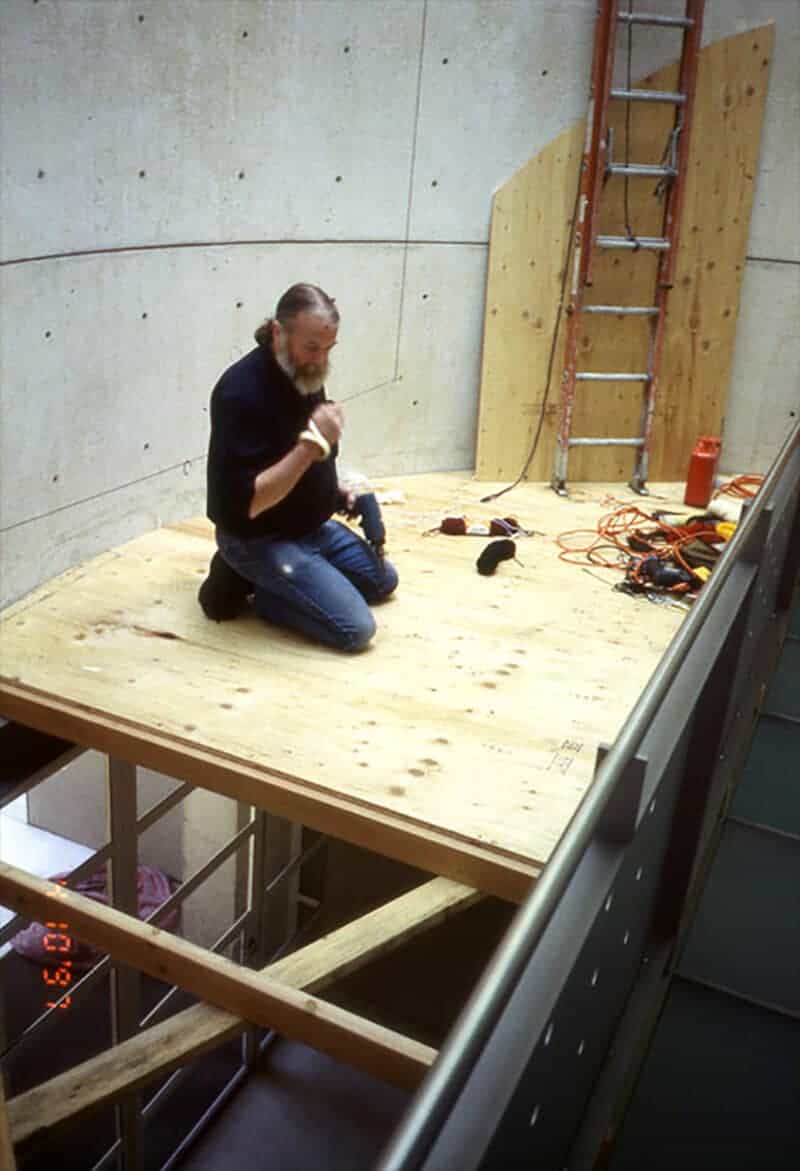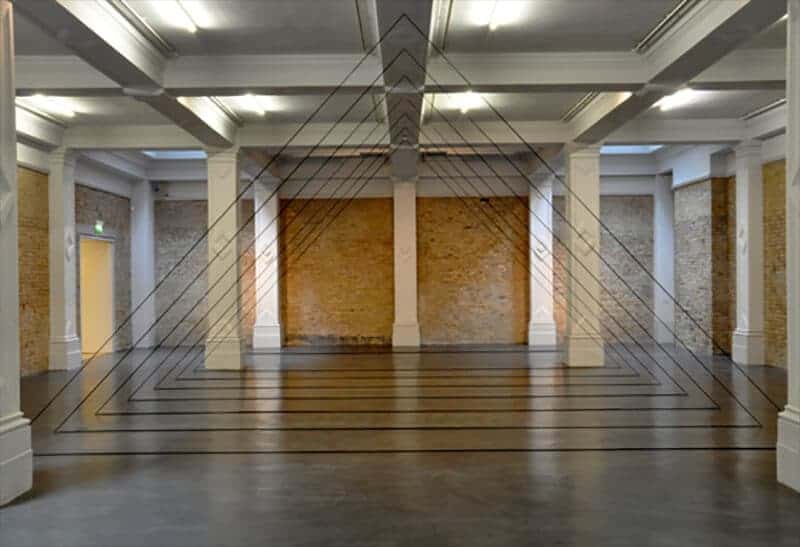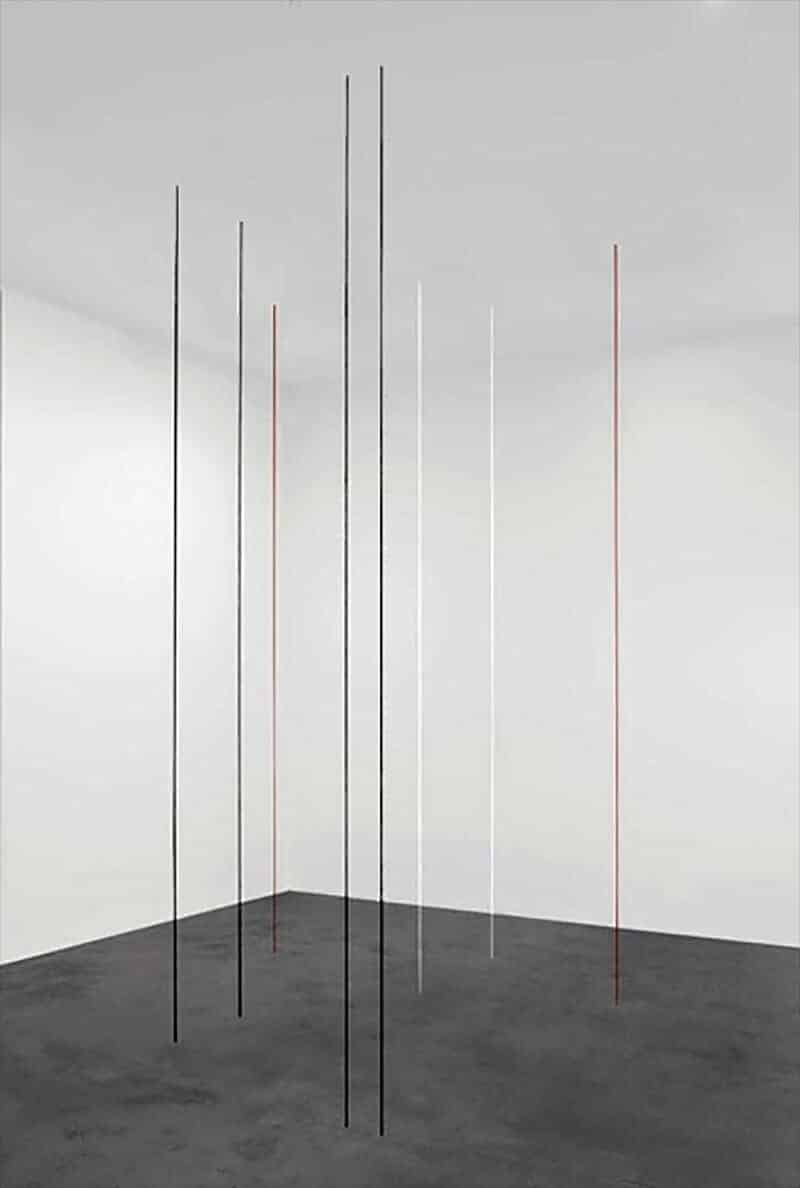
Language draws an imaginary line around objects. That demarcation follows through in all the lines in our lives: the Morse code of a Risk board’s borders, anticipatory lines dragged across the icing of a cake, the dotted line around a coupon in a newspaper. These lines define the edges of something real, something made distinct and separate by words (“Argentina”, ‘my slice,”’”12% off fireworks”). When those lines fail – when things overspill their borders, when the separation of things becomes compromised – language falters too (if this isn’t the USSR any more, then what do we call it?). Conversely, when the rigidity of a line is used to limn something imaginary, something beyond language, the effect is uncanny and somewhat disquieting. It’s like that in Fred Sandback’s string pieces: taut lines of coloured yarn, used to describe semi-architectural spaces that provoke an internal dialogue between mind and body. Why can’t I walk through that empty space? What stops me?
The small installation of Sandback’s work, currently on view in a single room at the Whitechapel Gallery, is the best example of the late artist’s spatial alchemy you’re likely to see in the UK. Sandback needs space, and a lot of it, despite his work’s modest (and physically feather-light) qualities. He’s best showcased at Dia:Beacon, where he effortlessly steals the show from his more heavy-handed minimalist compatriots. A huge rectangle of blue yarn, nailed invisibly to the concrete floor at an angle to its insertion in the wall, becomes a vast and flawless sheet of glass, leaning gently, worryingly. Sandback’s work, like that of Michael Heizer, Richard Serra, and Richard Tuttle, is a reminder that the physical experience of art trumps its intellectual unravelling every time. Language pales in comparison to that stomachy leap of fear and pleasure. As Sandback himself put it in 1975: “I don’t have an idea first and then find a way to express it. That happens all at once (…) Ideas are executions.” And: “Fact and illusion are equivalents.”

Sandback’s Untitled (Sculptural Study, Seven-Point Triangular Construction) dominates the Whitechapel installation. Seven equilateral triangles of black yarn stretch floor to ceiling, the nails in their bases and apexes hidden, so that they act like apparitions. Each is separated by about three feet of space, enough to walk between the shapes; the triangles’ sides climb and drop at either side, like the walls of a valley, and you feel your body respond accordingly, in and out of enclosure (that slight loosening at the top of the spine). Walking through the triangles feels, oddly, like a kind of violation: you brace instinctively for the glass to smash. The experience is physical without being sensual, thoughtful without being cerebral. Transfixed for longer than you’d expected by an almost laughable modesty of means, it’s your body’s mind doing the thinking. You’re paying attention.

Sandback’s work belongs in a tradition of the line as purveyor of illusory magic. In the early Italian figuring-out of spatial recession, the parallel lines naturally occurring in classical architecture formed the axes of new creative territory. Sandback’s triangles might be the ghosts of Palladian pediments, his shafts of vertical thread the trace memory of fluted columns. Lines, whether in a drawing by Paolo Uccello, a zooming grid in Tron, or a soaring geometric form by Sandback, create a framework for imaginative play, a kind of playground of the mind. And yet, in Sandback’s devotion to everyday reality (the ordinariness of that fuzzed thread, with its associations of domesticity and repetition), there’s something more: a poetic reminder, as in the coloured lines on a map, that you are here.